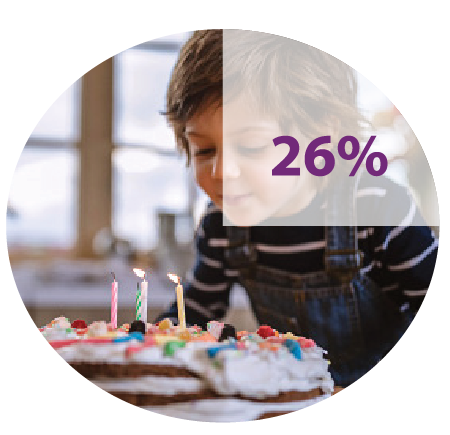Childhood trauma is widespread.
This information will help you understand trauma, the types of trauma a child can experience, and the role difficult or adverse childhood experiences can play in the long-term health and wellbeing of children.
 It’s estimated that 26% of children in the United States will witness or experience a traumatic event before the age of four.
It’s estimated that 26% of children in the United States will witness or experience a traumatic event before the age of four.
In addition, in one study, more than two-thirds of children reported at least one traumatic event by age 16.
Given the widespread experience of trauma in childhood, every organization that works with children will work with children who have experienced trauma.
The good news is that positive childhood experiences can promote healing. Not every child who experiences a traumatic event will experience traumatic stress with lasting impacts on their development. With love and support, many children who experience trauma are able to heal and thrive. Science has shown that post-traumatic brain growth can help children absorb these experiences and develop strong relationships and emotional resilience. Positive childhood experiences (PCEs) can promote healing and wellbeing.
What exactly is trauma?
Trauma results from an event, series of events or set of circumstances experienced by an individual that is:
- Physically or emotionally harmful or life-threatening, and
- Has lasting adverse effects on the individual’s functioning and mental, physical, social, emotional, or spiritual wellbeing.
Many children who experience a traumatic event or series of events have a traumatic stress response, which may be severe or recurrent.
 When the traumatic response continues, it can interfere with the child’s development across a number of areas:
When the traumatic response continues, it can interfere with the child’s development across a number of areas:
- Social
- Emotional
- Physical
- Cognitive
- Sexual
This in turn may result in changes in the child’s behavior or cognitive functioning, such as problems with memory, attention and emotional regulation. It can also result in physical symptoms, such as headaches, stomachaches and muscle pain.
No two children will react to the same traumatic event in the same way.
For more information:
- Learn about some of the sources of trauma and adverse childhood experiences (ACEs)
- Learn about trauma
- Estimated Proportion of Adult Health Problems Attributable to Adverse Childhood Experiences and Implications for Prevention — 25 States
- Relationship of childhood abuse and household dysfunction to many of the leading causes of death in adults.
- A New Framework for Addressing Adverse Childhood and Community Experiences: The Building Community Resilience Model.

